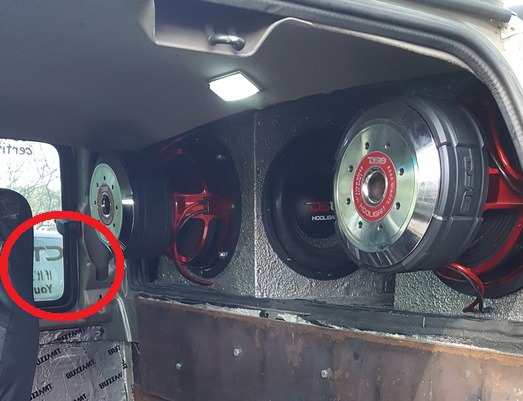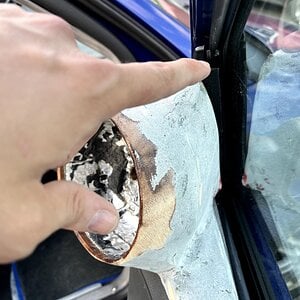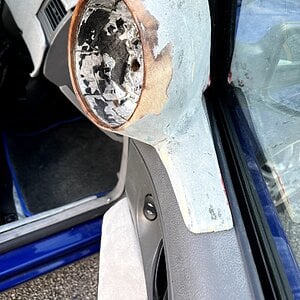hispls 5,000+ posts
CarAudio.com Veteran
RMS means Root Means Squared. This is a useful tool for finding the average power of a sine wave. Picture a sine wave going up and down from zero to a peak of say 100V+ and 100V-. Obviously at some points along the wave the signal is 100V or thereabouts and of course at some points towards the median the signal is next to nothing. Transpose the negative signal into the positive and shade that all in and you will see that while the signal touches 100V there's not as much power (the shaded bit) as a 100V DC signal (or square wave which would leave next to nothing unshaded).Aren't RMS ratings usually on pink noise not sine waves? A 4k rms sine wave seems pretty ridiculous, but you get pretty close to that with a 20a outlet wired appropriately and I've seen subs take that for minutes not 30 seconds
What root means squared does is takes the absolute value of every voltage along the waveform and finds the average. Squaring a number and taking the square root is a mathematical operation to transform negative numbers positive then means is just average (the sum of all the numbers divided by the number of numbers you used). Fortunately through the magic of math we don't need to measure every voltage on the waveform but know it's .707
As an interesting side note, unless you're designing a power supply NOBODY talks about peak voltage when dealing with AC power. The RMS is true power and is pretty much implied when anybody (besides car audio marketing and the dupes they're trying to fool) in any industry discusses AC voltage, current, or power.
So if by "RMS" you mean something completely different than root means squared then, sure, I suppose 4000W RMS means something else, or even the average absolute value of the average power generated by pink noise with peaks of 6000W...... or **** it, the gullible consumers will buy it as long as we print a big enough number on the product fvck you, buy our "4000W" sub and see the games we'll play to not honor warranty when you actually send it 4000W signal on a good bass race song. Or does "4000W RMS" mean that you can hook up that sub at nominal impedance to a 4000W rated amp and probably be alright 90% of the time?
Anyway, the point is the concept of RMS to deal with AC is week one of an AC theory course and likely in the first chapter or two of any textbook on the subject. The way the industry throws it around and the uneducated consumers parrot the term without understanding it is dishonest for everybody involved and does nothing to give anybody a good expectation of what a product can or cannot do. If you're making the case that "RMS" for the purpose of speaker power rating should be an average of typical music playing you really need to define what that typical music is and if you apply the same standards of power rating to amps you're going to be in for a world of confusion and hurt feelings.
110V X 20A = 2200W
110V X 30A = 3300W
Wall socket destruction is either running coils in series, counting on 60hz impedance of their sub to keep them out of trouble, or cramming a stack of pennies in their fuse box to not open fuses if they are getting any more power than the math tells us.
Anyway, if the gold standard for whether an amp will do what it claims is the amp dyno, should be not hold loudspeakers to the same standards? Whether or not either is useful in the world of playing music aside, it's at least something that's not open to as much interpretation and makes for an easy standard for comparison.



